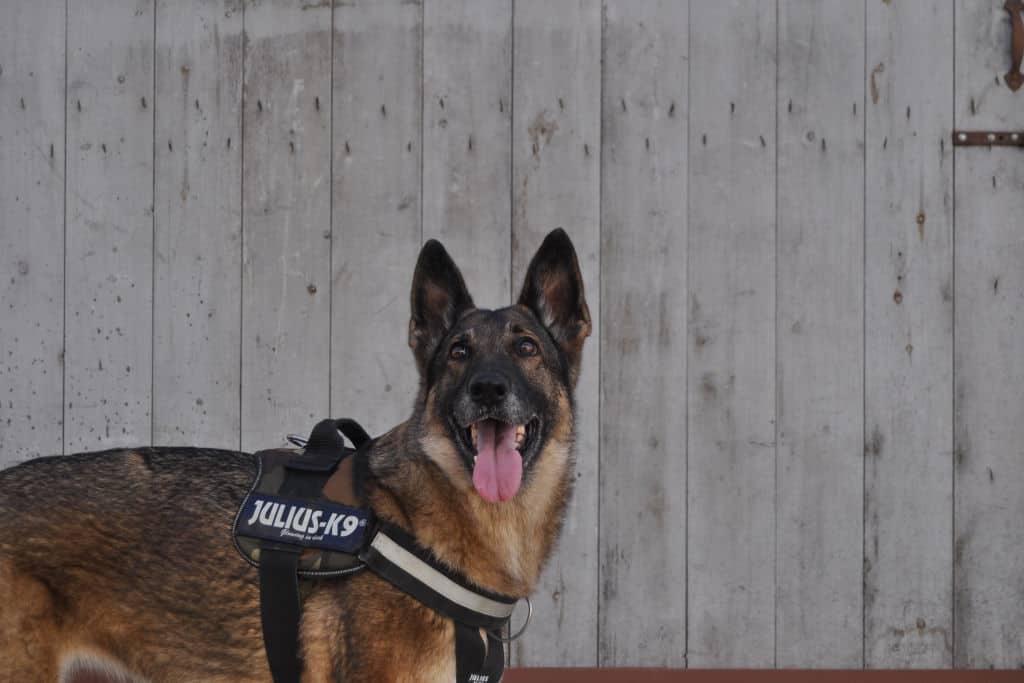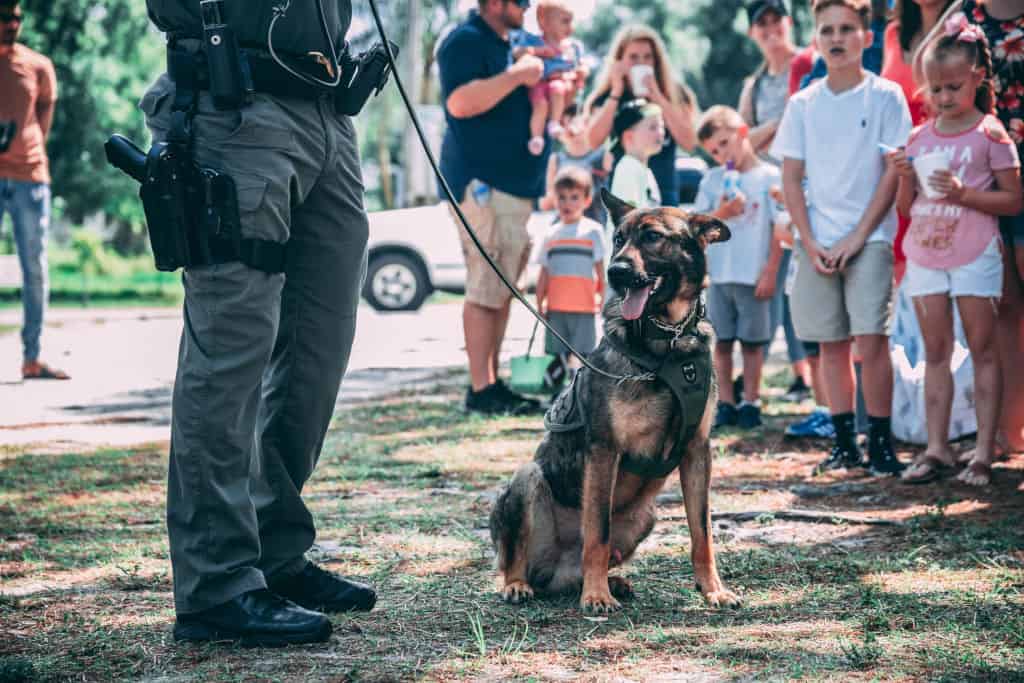Not all police dogs are spayed or neutered, and it’s up to the handling department to decide if a dog should be fixed.
Some police departments will neuter/spay their dogs, while others will not. There are many reasons, such as whether castrating a dog modifies its behavior and whether police dogs need hormones from their male appendages to drive them.
Both males and females can be spayed/neutered, and when correctly and consistently trained, either sex can become outstanding working dogs.

Why Aren’t Male Police Dogs Neutered?
Some assert that neutering a dog significantly reduces testosterone levels. As a result, they are less likely to be aggressive than what is required from a police working dog, which is why some police departments may not neuter them.
In terms of behavior, neutering can often reduce aggression, roaming, and other territorial characteristics. It can sometimes help a hyperactive dog relax, but this isn’t always the case.
Neutering a male dog reduces testosterone levels. The implications of these hormonal alterations are hotly debated and vary significantly between breeds and even dogs. Some dogs may not alter, while others may never want to work as police dogs again.
This unforeseen and dangerous behavior change concerns police dogs, handlers, trainers, and departments because a significant amount of time and money is invested in selecting, training, and obtaining them.
Moreover, some departments have started implementing rigorous post-neuter assessments to determine if the dog’s working capabilities remain uncompromised.
There are several compelling reasons to neuter your dog. It helps to avoid undesired litter if your dog escapes and joins up with the female down the street. It can also help diminish a dog’s propensity to roam, mark territory, and reduce hostility in certain situations.
These are ideal for a house pet, but a police dog requires all of its “drive,” which can be delivered partially by the hormones generated by testicles. Police canines are also kept under considerably tighter security, so the chances of them escaping or inadvertently injuring someone are smaller than with a conventional pet.
Are Most Police Dogs Female?
Police dogs aren’t always female in the majority, and it’s usually a mix of males and females. Patrol dogs can often be predominantly males, although detection K9s and tracking units are typically split 50/50. There are a few arguments for male dogs, though.
You may notice a preference for male dogs due to heat cycles. Gender preferences differ from one agency to the next, and some may only hire males. Those who solely use males believe their size, aggression, and drive will be more significant.
That said, departments that incorporate both male and female K9s often emphasize the importance of the individual dog’s aptitude and connection with their handler over gender-specific traits.
When I questioned a K9 trainer about it, they replied that males might be slightly more motivated to please, which is what trainers prefer. On the other hand, females can be more independent and may focus more on being protective of their handler.

Being more likely to be protective seems excellent on paper, but it isn’t ideal in the field if you give special orders and the dog goes away from you.
It’s essential to strike a balance between a dog’s natural protective instincts and the ability to obediently follow commands, ensuring efficient operations on the ground.
It can also be a personal and no preference based on other criteria, such as a strong prey drive. Male and female dogs can excel at whatever job they are taught if they are consistently trained.
Are Police Dogs Friendly?
Most police dogs live with their handlers and are treated as family pets when not on duty, so for the most part, they are friendly. However, it’s never a bright idea to approach a random dog and try to pet it, and police dogs can be dangerous to anyone they do not know well.
Whether a police dog will be friendly depends on its personality and the trainer. Each dog’s personality responds to its handler’s training and temperament, but they are generally well-trained and socialized with humans and other dogs.
While on duty, police dogs are not automatically friendly to other dogs unless their handler directs them to be so. When police dogs are selected as puppies as potential K-9 dogs, they look for high energy rather than hostility.
If the dog isn’t on duty, you can (and always should) ask the officer if you can approach the dog. He will determine if the dog is agreeable and notify you. Most police dogs I’ve encountered are pleasant if their handler is comfortable and will let you say “hi” and pet them.
Training emphasizes distinguishing between potential threats and non-threats, ensuring K9 units interact safely with the public while retaining their keen edge for law enforcement tasks.

FAQs
Does neutering help with prey drive?
Neutering typically has little effect on the dog’s predatory drive, so police would often look for dogs with a robust predatory drive within their personality. While neutering doesn’t change the prey drive, training and socializing him with other creatures and dogs may help with consistent training.
Are male dogs depressed after being neutered?
When dogs are neutered or spayed, they may appear “depressed.” However, this is usually due to poor pain management or side effects of general anesthesia. Masculinity is a uniquely human concept, and dogs do not have this notion. As a result, dogs do not mourn what we would term the loss of manhood following neutering.
Are police dogs trained to kill?
Police dogs are trained to injure rather than kill. Police K-9 canines are prepared to pursue a fleeing or hidden suspect, restrain them, and confine them to a specific area until human officers come to conduct the arrest. They are, however, taught to attack you if you attack them.
Alex, a passionate animal lover, has experience in training and understanding animal behavior. As a proud pet parent to two dogs and three cats, he founded AnimalReport.net to share insights from animal experts and expand his knowledge of the animal kingdom.









